Health Care > EXAM > HESI NCLEX-RN 4th Edition Mental Health EXAM QUESTIONS AND ANSWERS WITH Rationale (All)
HESI NCLEX-RN 4th Edition Mental Health EXAM QUESTIONS AND ANSWERS WITH Rationale
Document Content and Description Below
1. While in group therapy, a client who is diagnosed with posttraumatic stress disorder (PTSD) is processing an experience from the war in Iraq when another client tips over a chair. What action shoul... d the nurse take when the client with PTSD falls to the floor in a fetal position? A. Confront the client who tipped over the chair about the inconsiderate behav- ior. B. Dismiss the other clients from the group therapy session for a 10-minute break. C. Reinforce reality to the client on the floor and remove him to a quiet space. D. Call a security code and medicate both clients with an antianxiety drug.: Cor- rect Answer: C Rationale: The client who is diagnosed with PTSD is reexperiencing the traumatic experience and needs reality reassurance (confirmation that there is no danger at this time) and reduced stimuli (C). (A, B, and D) do not consider the needs of these two clients at this time. 2. The nurse notes multiple burns on the arms and chest of a 2-year-old Vietnamese child who is being treated for dehydration. When questioned, the child's father states that he treated the child's vomiting with the cultural practice termed coining, which resulted in burned areas. Which expected outcome statement has the highest priority? A. The child will be protected from further harm. B. The family's cultural values will be respected. C. The parents will express regret at harming their child. D. The parents will demonstrate an ability to care for burn wounds.: Correct Answer: A Rationale: The nurse's highest priority is to ensure that no further harm befalls the child (A). (B, C, and D) are also important objectives but are secondary to (A). 3. A client in an acute care facility has been taking antipsychotic medications for the past 3 days with a decrease in psychotic behaviors and no adverse reactions. On the fourth day, the client experiences an increase in blood pressure and temperature and demonstrates muscular rigidity. Which action should the nurse initiate? A. Place the client on seizure precautions and monitor frequently. B. Take the client's vital signs and notify the health care provider immediately. C. Describe the symptoms to the charge nurse and document them in the client's record. D. No action is required at this time because these are known side effects of her medications.: Correct Answer: B Rationale: This is an emergency situation, and the client requires immediate management in a critical care setting (B). These symptoms are descriptive of neuroleptic malignant syndrome (NMS), an extremely serious and life-threatening reaction to neuroleptic drugs. The major symptoms of this syndrome are fever, rigidity, autonomic instabil- ity, and encephalopathy. Respiratory failure, cardiovascular collapse, arrhythmias, and/or renal failure can result in death. (A) is not indicated in this situation. (C) does not consider the seriousness of the situation. (D) is an incorrect statement. 4. A client who recently retired is admitted to the psychiatric inpatient unit with a diagnosis of major depression. The initial nursing care plan includes the goal, "Assist client to express feelings of guilt." What is true about the goal statement referring to the client's depression? A. Implementation of the goal should be deferred until further data can be gathered. B. The depression will dissipate once the client becomes accustomed to retire- ment. C. Depressed clients may be unaware of guilt feelings and should be encour- aged to increase self-awareness. D. Nursing goals should be approved by the treatment team before they are initiated.: Correct Answer: C Rationale: Depression is associated with feelings of guilt, and clients are often not aware of these feelings (C). Awareness is the first step in dealing with guilt (or any other feeling), so the nurse's efforts should be directed toward increasing the client's awareness of feelings. Although a goal may be changed based on an evaluation of interventions to meet the goal, a goal should never be ignored (A). (B) dismisses the client's symptoms as age-related. Setting goals for the nursing care plan is a function of the nurse (D), although the nurse can collaborate with the treatment team. 5. An individual with a known history of alcohol abuse is admitted for emer- gency surgery following a motor vehicle collision. The nurse includes in the client's plan of care, "Observe for signs of delirium tremens." Which early signs indicate that the client is beginning to have delirium tremens? A. Abdominal cramping and watery eyes B. Depression and fatigue C. Restlessness and confusion D. Hostility and anger: Correct Answer: C Rationale: A client experiencing alcohol withdrawal often has delirium tremens (DTs), which are characterized by progressive disorientation. Initially, the client will appear restless and confused (C) and develop tachycardia, tachypnea, and diaphoresis. Hallucinations, paranoia, and seizures can also occur later in the development of DTs. (A) is indicative of withdrawal from opiates such as heroin or morphine. (B) is often seen in cocaine withdrawal. (D) is most characteristic of the paranoid client. 6. A woman brings her 48-year-old husband to the outpatient psychiatric unit and tells the nurse that he has been sleepwalking, cannot remember who he is, and exhibits multiple personalities. These behaviors are often associated with which condition? A. Dissociative disorder B. Obsessive-compulsive disorder C. Panic disorder D. Posttraumatic stress syndrome: Correct Answer: A Rationale: Sleepwalking, amnesia, and multiple personalities are examples of detaching emotional conflict from one's consciousness (A). (B) is characterized by persistent, recurrent intrusive thoughts or urges (obsessions) that are unwilled and cannot be ignored and provoke impulsive acts (compulsions), such as constant and repeated hand washing. (C) is an acute attack of anxiety characterized by personality disorganization. (D) is reexperiencing a psychologically terrifying or distressing event that is outside the usual range of human experience such as war or rape. 7. client in the critical care unit who has been oriented suddenly becomes disoriented and fearful. Assessment of vital signs and other physical para- meters reveals no significant changes, and the nurse formulates the diag- nosis of Confusion related to ICU psychosis. Which intervention is best to implement based on this client's behavior? A. Move all medical equipment away from the client's bedside. B. Allay fears by teaching the client about the causes of the disease. C. Cluster care to allow for brief rest periods during the day. D. Encourage visitation by the client's family members, including the client's young children.: Correct Answer: C Rationale: The best intervention is to organize care so that the client can experience rest periods (C). The critical care unit contains many lifesaving treatment modalities that offer clients an array of auditory, visual, and even painful stimuli. These stressors can result in isolation and confusion. (A) is not practical because the client may need assistance from medical equipment to survive. The client is too ill to receive teaching (B). Although (D) may be supportive, young children are routinely prohibited from critical care units because of increased risk of infectious disease transmission. 8. At the first meeting of a group at a daycare center for older adults, the nurse asks one of the members what kinds of things the client would like to do with the group. The older adult shrugs and says, "You tell me. You're the leader." What would be the best response for the nurse to make? A. "Yes, I am the leader today. Would you like to be the leader tomorrow?" B. "Yes, I will be leading this group. What would you like to accomplish?" C. "Yes, I have been assigned to lead this group. I will be here for the next 6 weeks." D. "Yes, I am the leader. You seem angry about not being the leader yourself."- : Correct Answer: B Rationale: Anxiety over participation in a group and testing of the leader characteristically occur in the initial phase of group dynamics. (B) provides information and refocuses the group to defining its function. (A) is manipulative bargaining. (C) does not focus the group on its purpose or task. (D) is interpreting the client's feelings and is almost challenging. 9. The nurse is assessing a young client admitted to the psychiatric unit for acute depression related to a recent divorce. Which statement is most indicative of a client suffering from depression? A. "I'm not very pretty or likeable." B. "I've lost 20 pounds in the past month." C. "I like to keep t [Show More]
Last updated: 1 year ago
Preview 1 out of 32 pages

Reviews( 0 )
Document information
Connected school, study & course
About the document
Uploaded On
Oct 21, 2022
Number of pages
32
Written in
Additional information
This document has been written for:
Uploaded
Oct 21, 2022
Downloads
0
Views
28


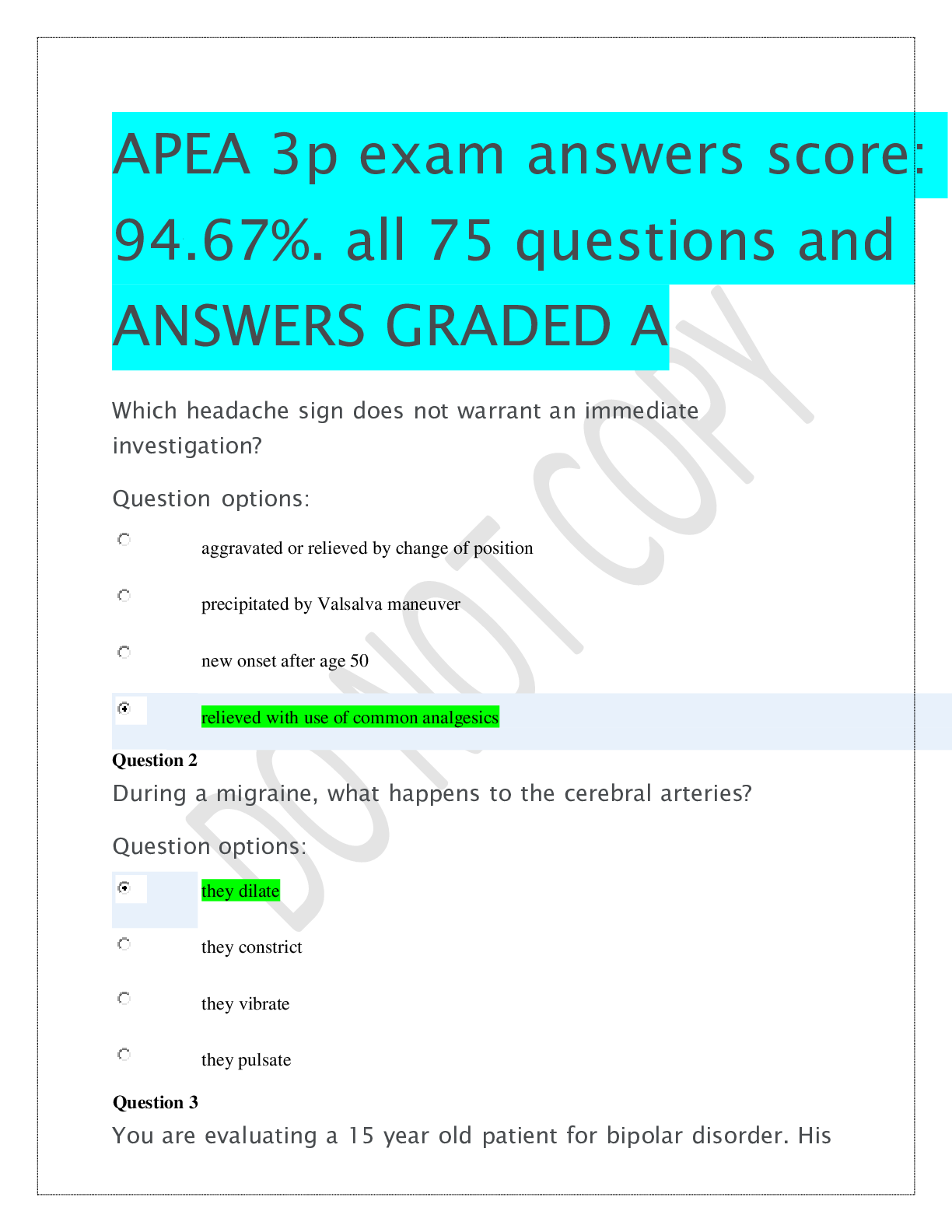


.png)
.png)

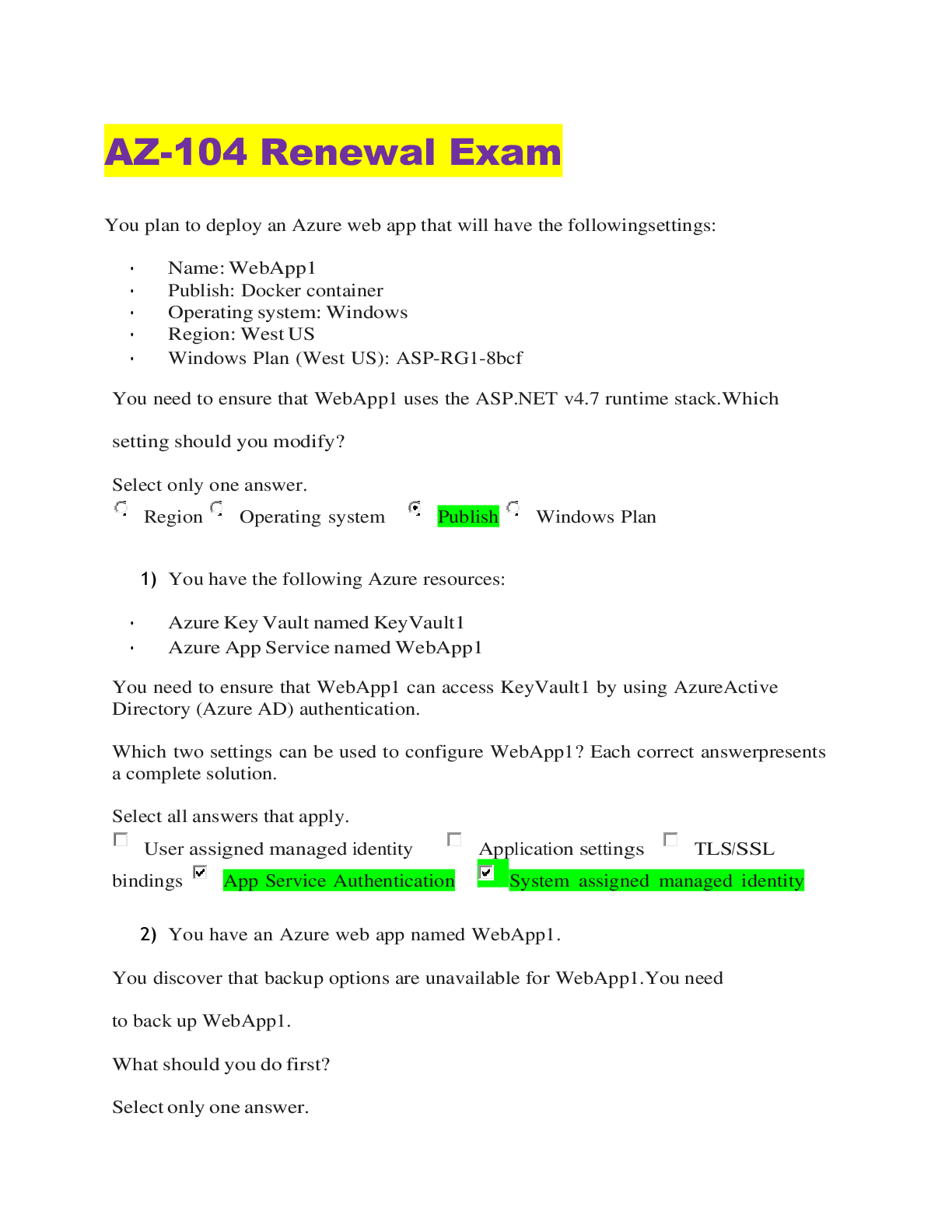




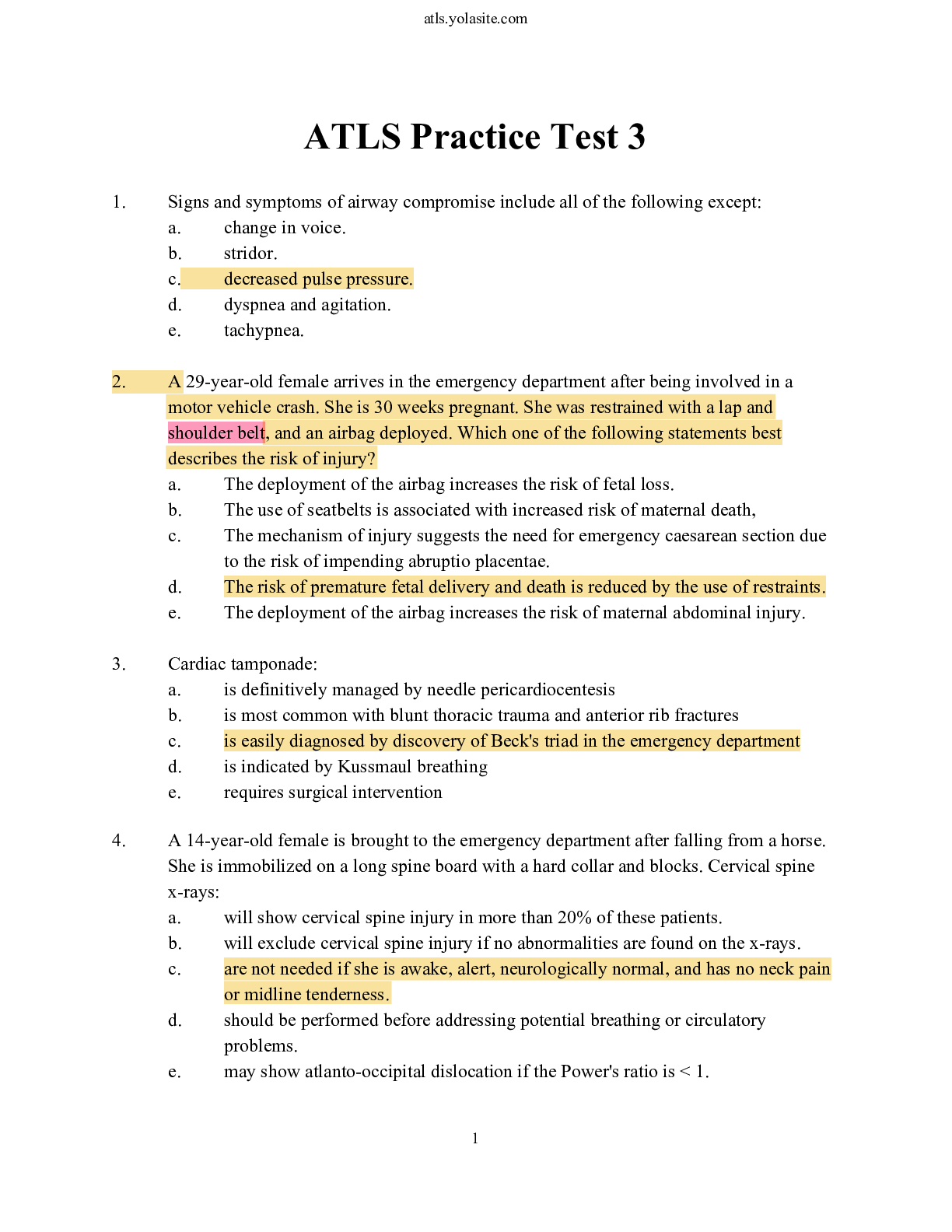


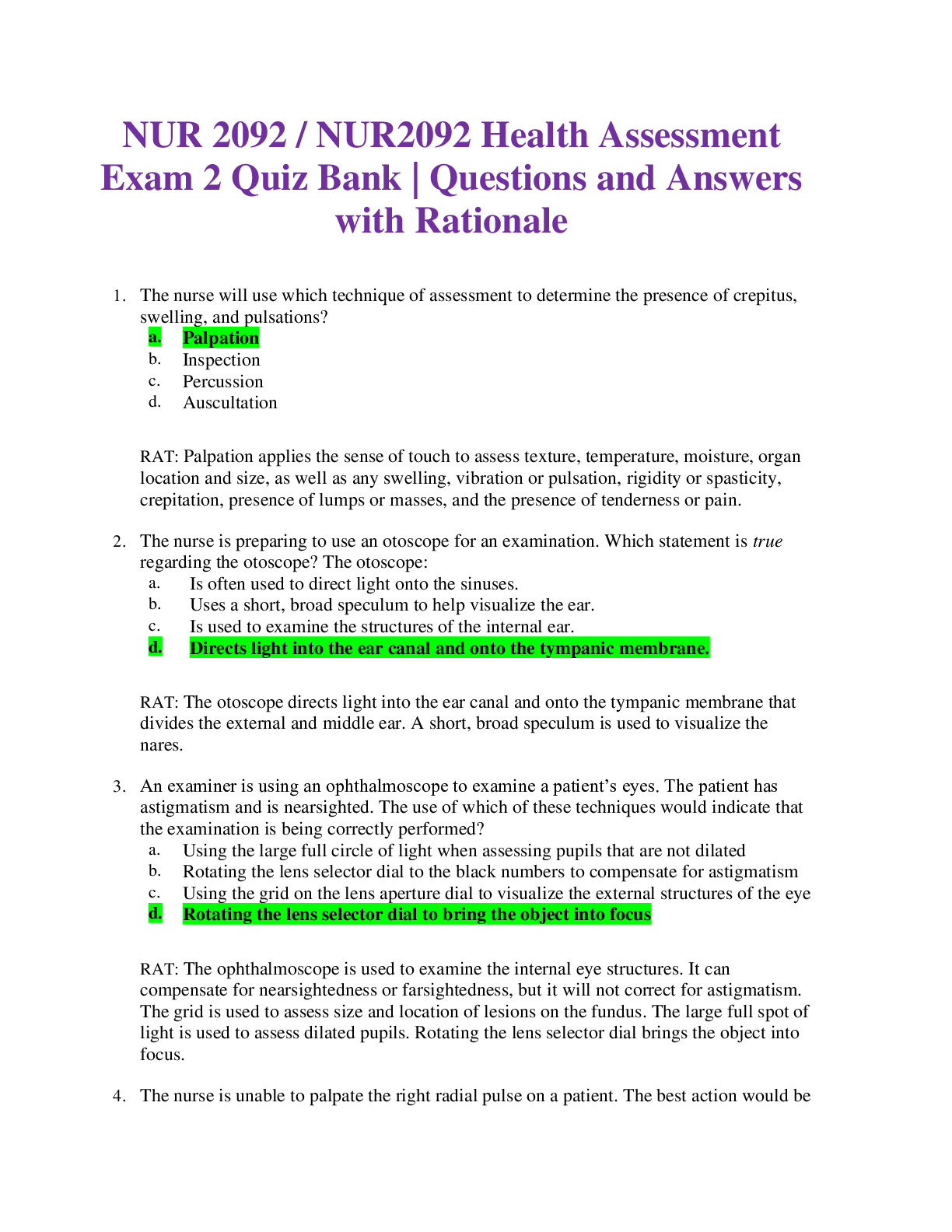
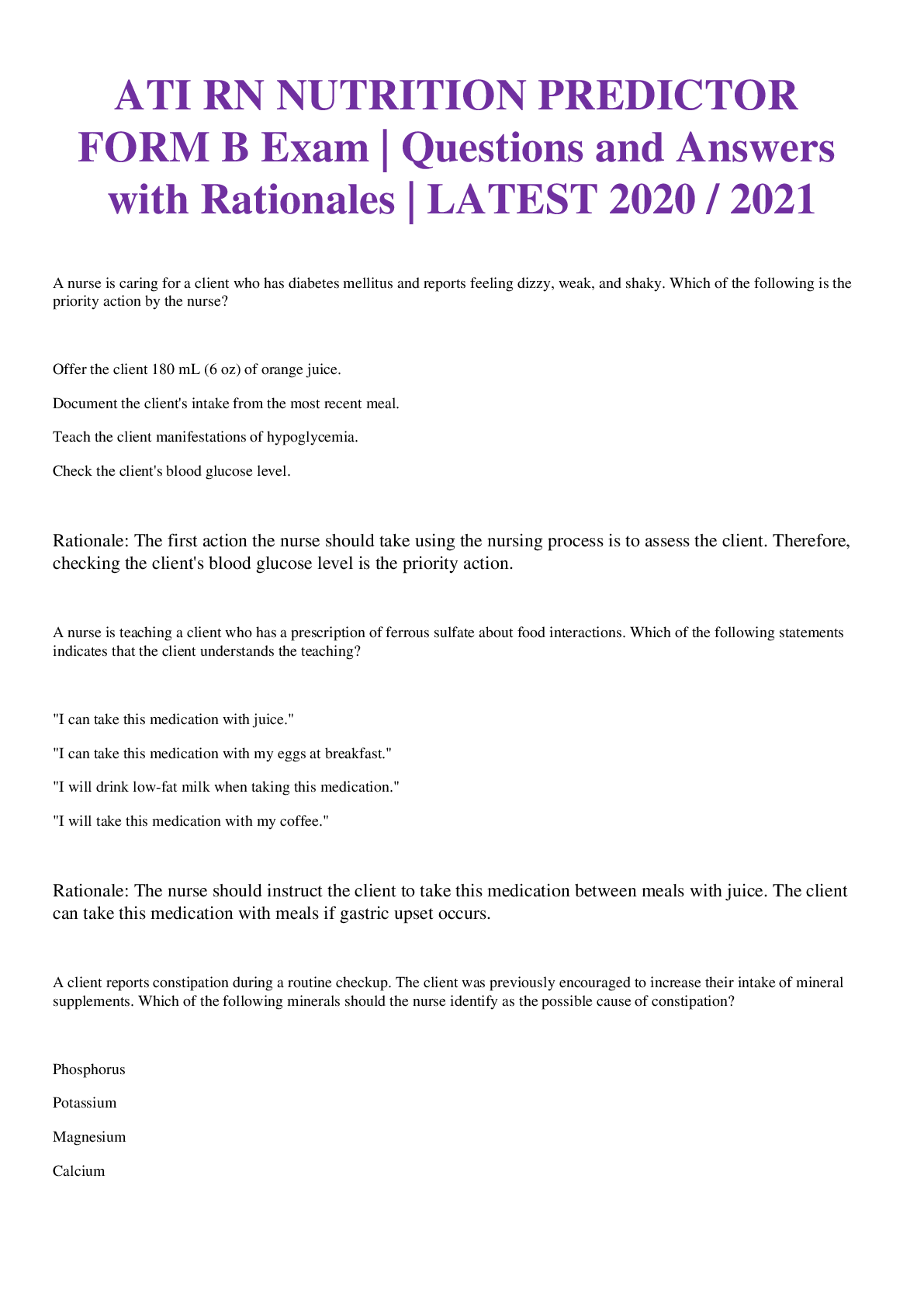
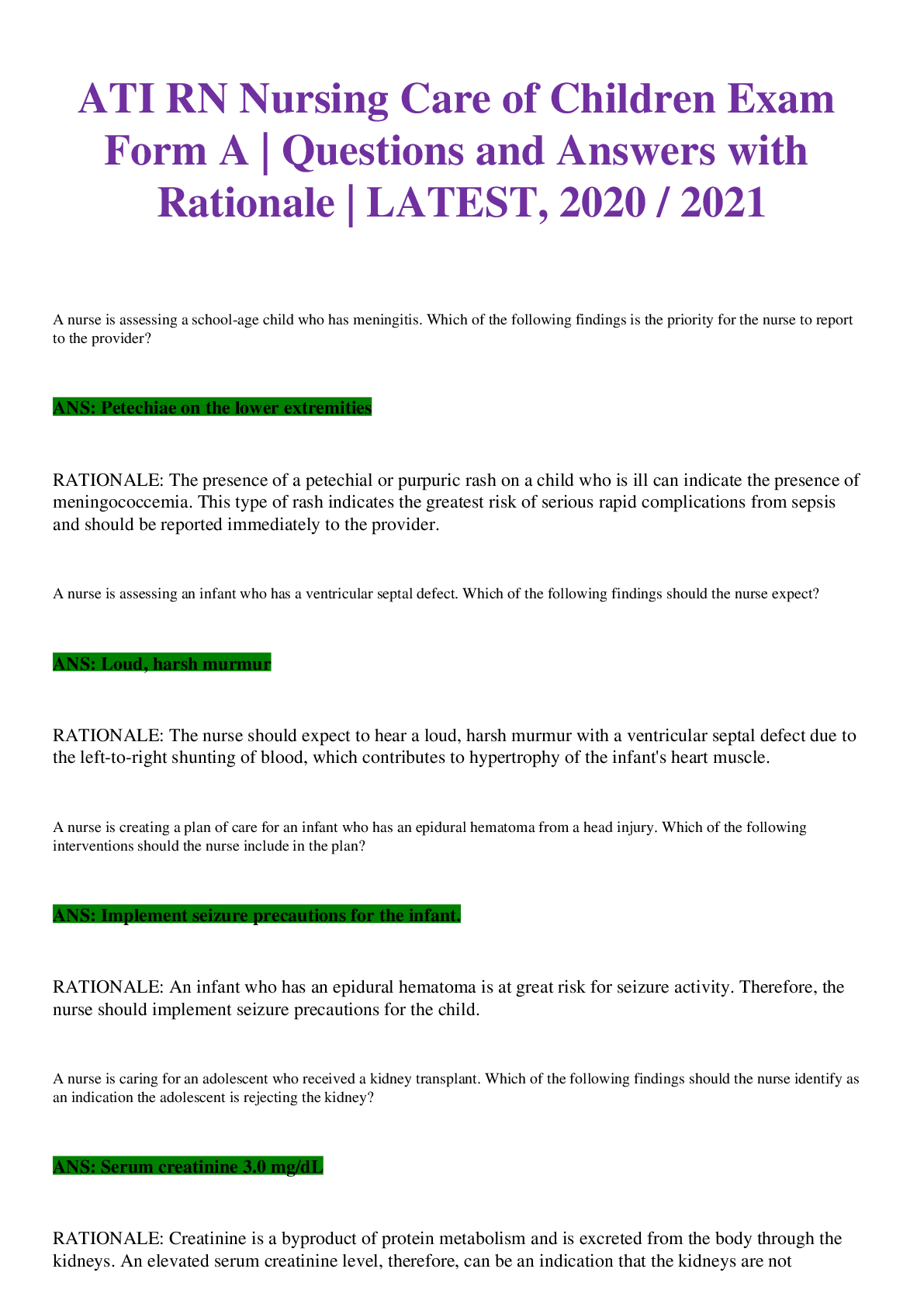

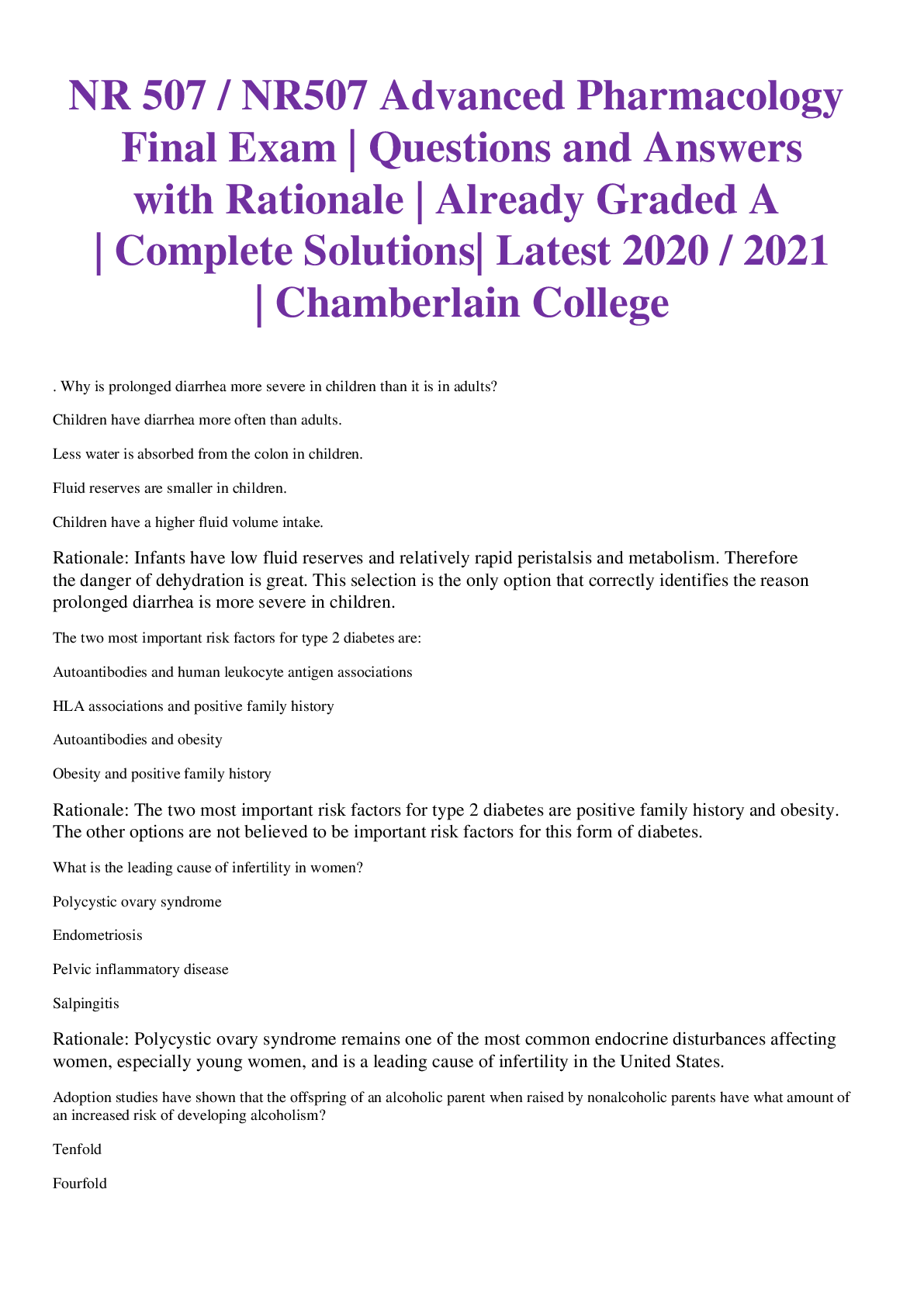
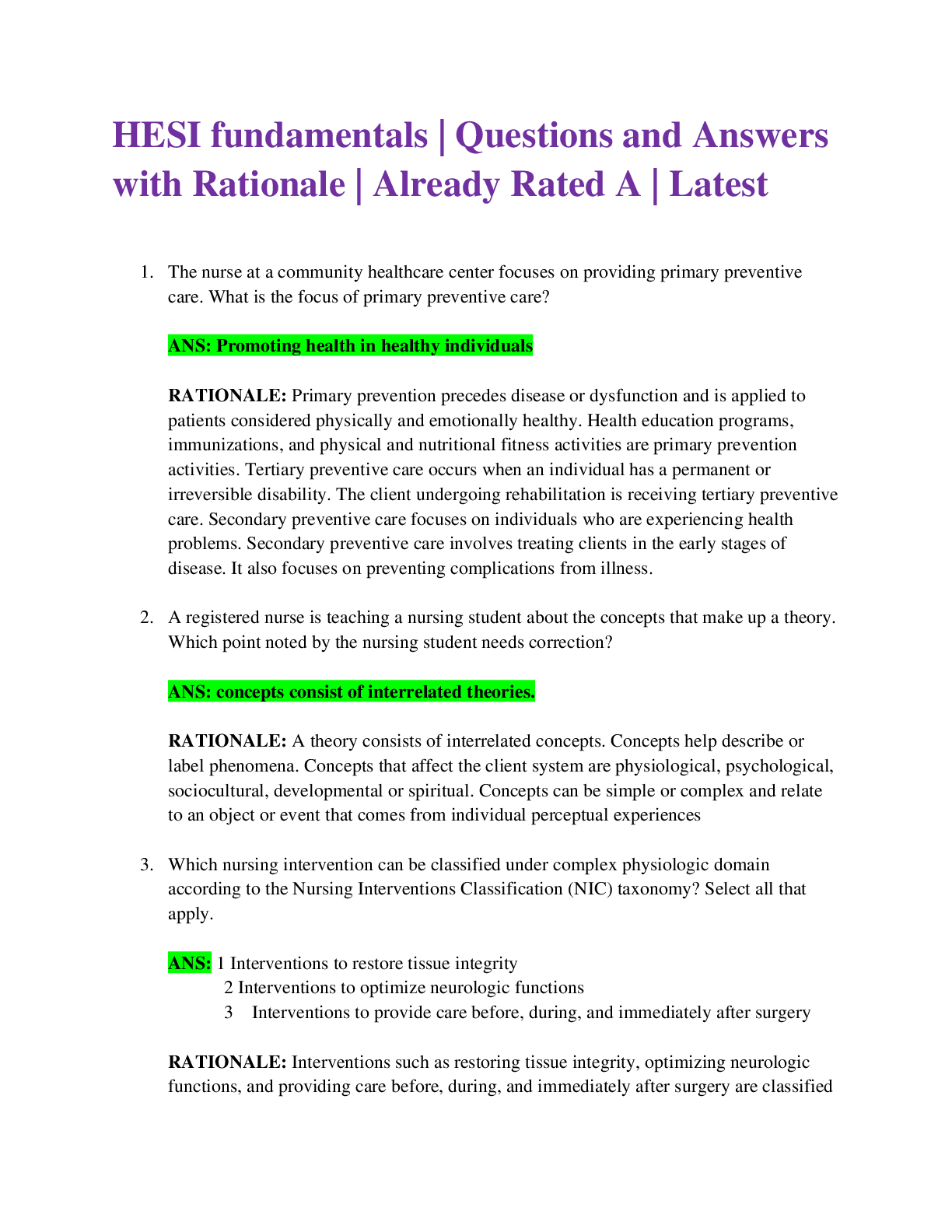
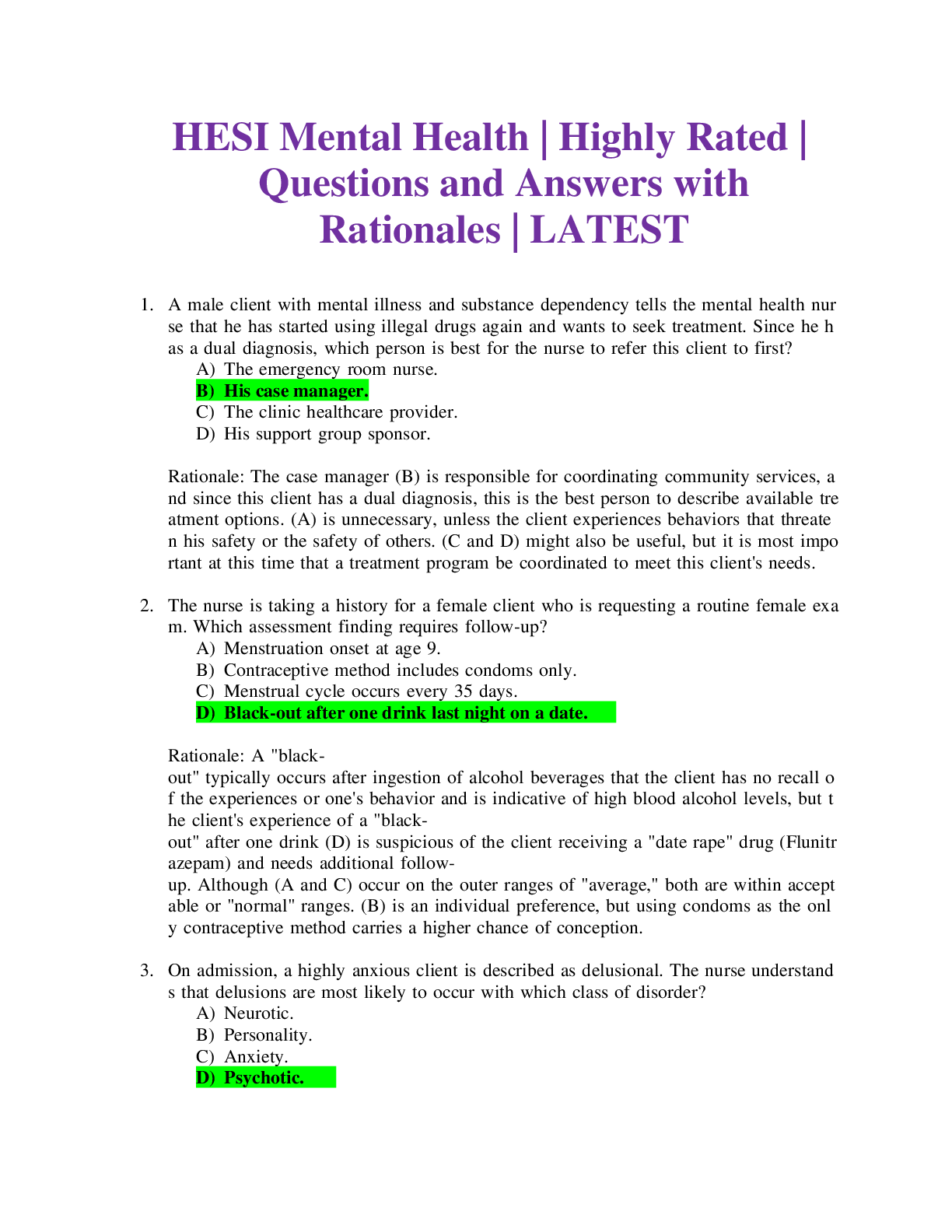
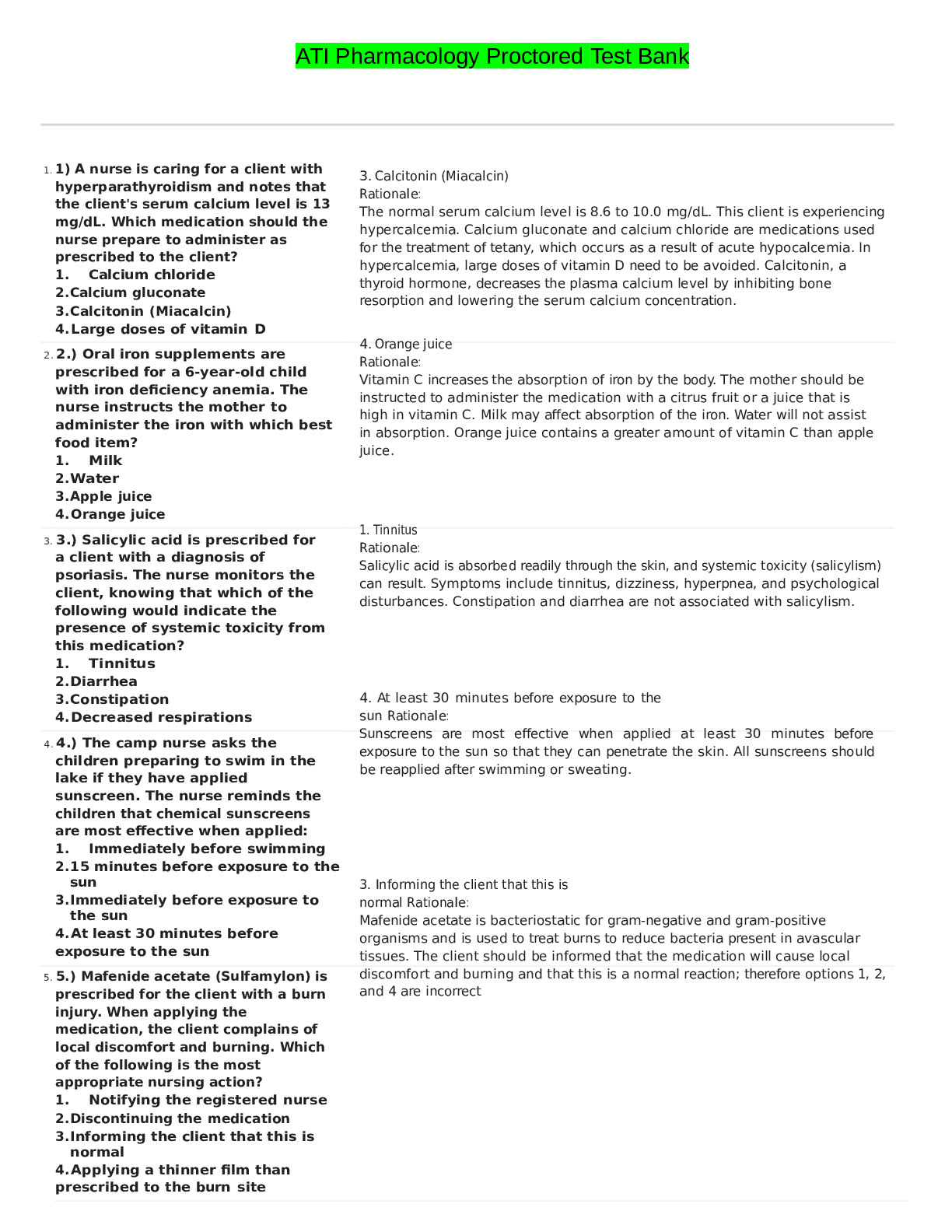

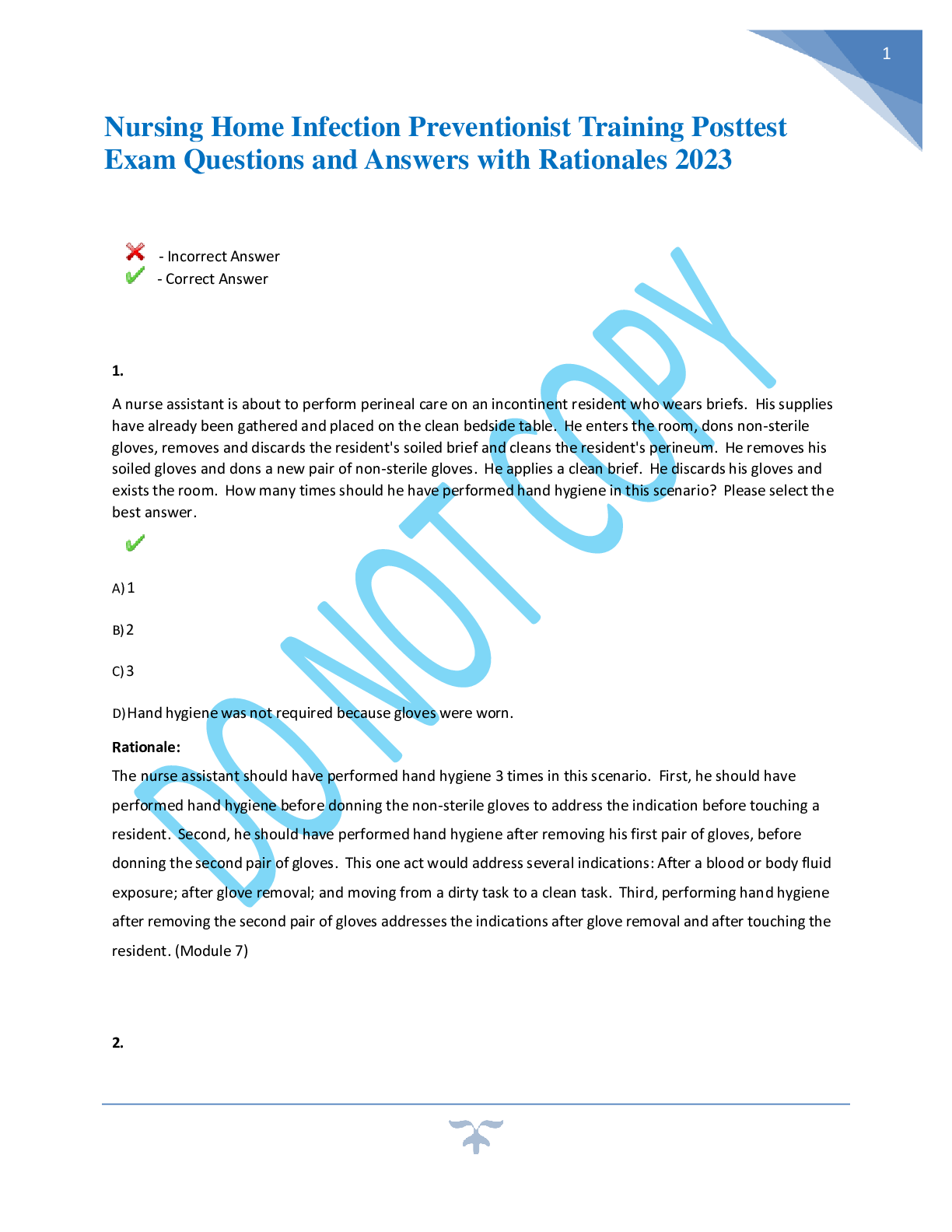



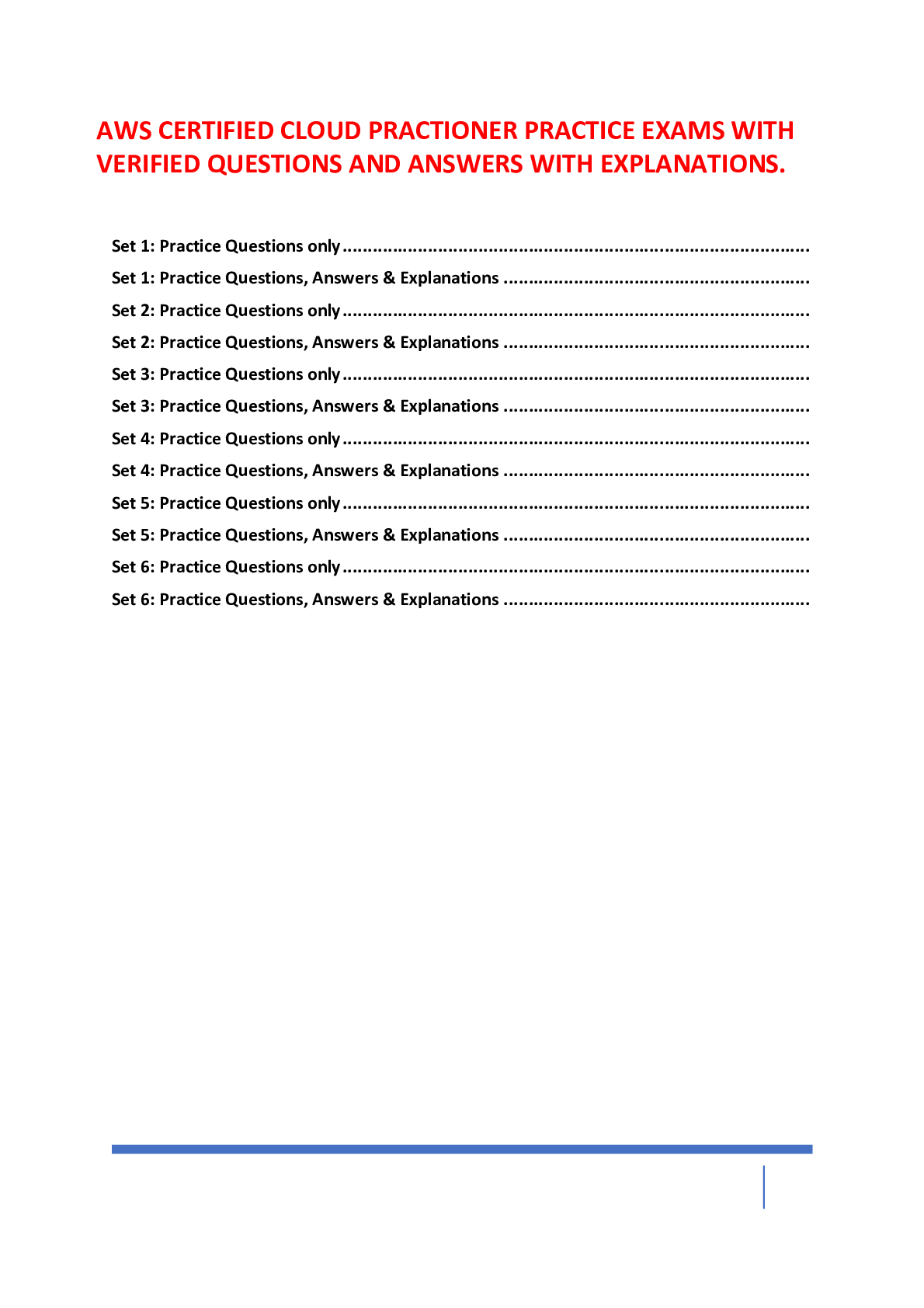


.png)



